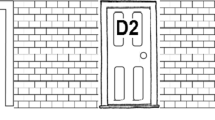Abstract
In contingent planning problems, agents have partial information about their state and use sensing actions to learn the value of some variables. When sensing and actuation are separated, plans for such problems can often be viewed as a tree of sensing actions, separated by conformant plans consisting of non-sensing actions that enable the execution of the next sensing action. We propose a heuristic, online method for contingent planning which focuses on identifying the next useful sensing action. We select the next sensing action based on a landmark heuristic, adapted from classical planning. We discuss landmarks for plan trees, providing several alternative definitions and discussing their merits. The key part of our planner is the novel landmarks-based heuristic, together with a projection method that uses classical planning to solve the intermediate conformant planning problems. The resulting heuristic contingent planner solves many more problems than state-of-the-art, translation-based online contingent planners, and in most cases, much faster, up to 3 times faster on simple problems, and 200 times faster on non-simple domains.


Similar content being viewed by others
Explore related subjects
Discover the latest articles, news and stories from top researchers in related subjects.Notes
One can define \(\exists \) knowledge landmarks, but as we explained above, these are of limited usefulness in our online planning case.
The term complete is justified here only because we have assumed that action preconditions and goals are conjunctions of literals.
This generalization was not implemented.
References
Albore, A., Palacios, H., & Geffner, H. (2009). A translation-based approach to contingent planning. In: IJCAI, pp. 1623–1628.
Bonet, B., & Geffner, H. (2000). Planning with incomplete information as heuristic search in belief space. In: Proceedings of AIPS’00, pp. 52–61.
Bonet, B., & Geffner, H. (2011). Planning under partial observability by classical replanning: Theory and experiments. In: IJCAI, pp. 1936–1941.
Brafman, R. I., & Shani, G. (2012). A multi-path compilation approach to contingent planning. In: AAAI.
Brafman, R. I., & Shani, G. (2012). Replanning in domains with partial information and sensing actions. Journal of Artificial Intelligence Research (JAIR), 45, 565–600.
Brafman, R. I., & Shani, G. (2016). Online belief tracking using regression for contingent planning. Artificial Intelligence, 241, 131–152.
Bryce, D., Kambhampati, S., & Smith, D. E. (2006). Planning graph heuristics for belief space search. Journal of AI Research, 26, 35–99.
Heckerman, D., Horvitz, E., & Middleton, B. (1993). An approximate nonmyopic computation for value of information. IEEE Transactions on Pattern Analysis and Machine Intelligence, 15(3), 292–298.
Helmert, M. (2006). The fast downward planning system. Journal of Artificial Intelligence Research, 26, 191–246.
Hoffmann, J., & Nebel, B. (2001). The FF planning system: Fast plan generation through heuristic search. JAIR, 14, 253–302.
Hoffmann, J., Porteous, J., & Sebastia, L. (2004). Ordered landmarks in planning. Journal of AI Research, 22, 215–278.
Howard, R. A. (1960). Dynamic programming and Markov processes. Cambridge: MIT Press.
Karpas, E., & Domshlak, C. (2009). Cost-optimal planning with landmarks. In: IJCAI.
Keyder, E., Richter, S., & Helmert, M. (2010). Sound and complete landmarks for and/or graphs. In: Proceedings of the European Conference on Artificial Intelligence (ECAI), pp. 335–340.
Komarnitsky, R., & Shani, G. (2016). Computing contingent plans using online replanning. In: Proceedings of the Thirtieth AAAI Conference on Artificial Intelligence, February 12–17, 2016, Phoenix, Arizona, USA, pp. 3159–3165.
Maliah, S., Brafman, R. I., Karpas, E., & Shani, G. (2014). Partially observable online contingent planning using landmark heuristics. In: Proceedings of the Twenty-Fourth International Conference on Automated Planning and Scheduling, ICAPS 2014, Portsmouth, New Hampshire, USA, June 21–26, 2014.
Maliah, S., Shani, G., & Brafman, R. I. (2016). Online macro generation for privacy preserving planning. In: Proceedings of the Twenty-Sixth International Conference on Automated Planning and Scheduling, ICAPS 2016, London, UK, June 12–17, 2016, pp. 216–220.
Newton, M. A. H. (2009). Wizard: Learning macro-actions comprehensively for planning. Ph.D. thesis, University of Strathclyde.
Richter, S., & Westphal, M. (2010). The LAMA planner: Guiding cost-based anytime planning with landmarks. JAIR, 39, 127–177.
Richter, S., & Westphal, M. (2010). The lama planner: Guiding cost-based anytime planning with landmarks. Journal of Artificial Intelligence Research, 39(1), 127–177.
Rintanen, J., Heljanko, K., & Niemelä, I. (2006). Planning as satisfiability: Parallel plans and algorithms for plan search. Artificial Intelligence, 170(12–13), 1031–1080.
Shani, G., Brafman, R. I. (2011). Replanning in domains with partial information and sensing actions. In: IJCAI, pp. 2021–2026.
Smith, T., & Simmons, R. (2004). Heuristic search value iteration for POMDPs. In: UAI 2004. Banff, Alberta.
Speck, D., Ortlieb, M., & Mattmüller, R. (2015). Necessary observations in nondeterministic planning. In: KI 2015: Advances in Artificial Intelligence—38th Annual German Conference on AI, Dresden, Germany, September 21–25, 2015, Proceedings, pp. 181–193.
To, S. T., Son, T. C., & Pontelli, E. (2015). A generic approach to planning in the presence of incomplete information: Theory and implementation. Artificial Intelligence, 227, 1–51.
To, S. T., Pontelli, E., & Son, T. C. (2009). A conformant planner with explicit disjunctive representation of belief states. In: ICAPS.
Zhu, L., & Givan, R. (2003). Landmark extraction via planning graph propagation. In: ICAPS 2003 Doctoral Consortium, pp. 156–160.
Acknowledgements
We thank the reviewers for their useful comments. This work was supported by ISF Grant 933/13, by the Israel Ministry of Science and Technology Grant 54178, by the Helmsley Charitable Trust through the Agricultural, Biological and Cognitive Robotics Center of Ben-Gurion University of the Negev, and by the Lynn and William Frankel Center for Computer Science.
Author information
Authors and Affiliations
Corresponding author
Additional information
Parts of this paper appeared in [16].
Rights and permissions
About this article
Cite this article
Maliah, S., Shani, G. & Brafman, R.I. Landmark-based heuristic online contingent planning. Auton Agent Multi-Agent Syst 32, 602–634 (2018). https://doi.org/10.1007/s10458-018-9389-9
Published:
Issue Date:
DOI: https://doi.org/10.1007/s10458-018-9389-9




